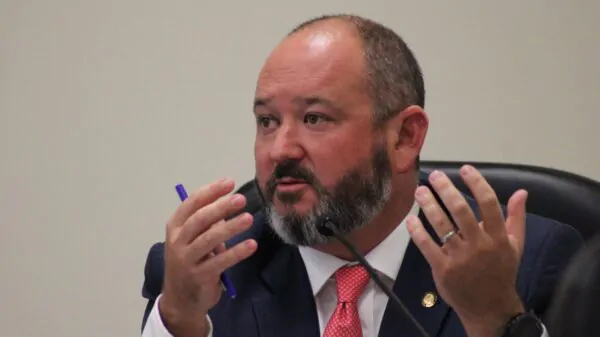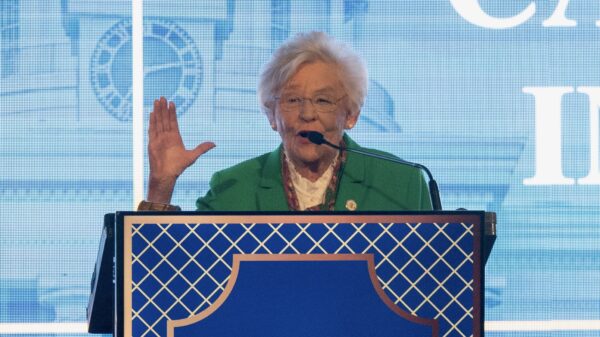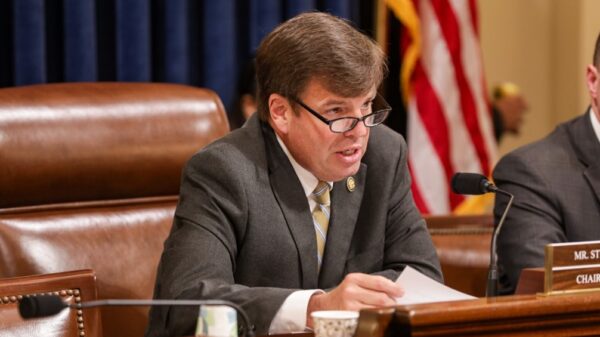It’s been three weeks since Montgomery Mayor Steven Reed sounded the alarm over rising hospitalizations in the River Region, but the rise in cases has not slowed, and hospitalizations are now much higher than three weeks ago when Central Alabama was in the national spotlight.
“We’re just full,” said Dr. Donald Williamson, a former state health officer and the head of the Alabama Hospital Association. “I mean this situation is just not sustainable.”
On Saturday, Baptist health reported its largest number of COVID-19 positive inpatients to date — at 127 across its three River Region hospitals. The number, as of Tuesday, had only ticked down to 124. At least 63 are on ventilators — up from 58 on Friday.
At Jackson Hospital, the other major hospital in Montgomery, COVID-19 positive inpatients spiked to 57 on June 3 and has only declined to 47 by Tuesday, though 23 inpatients were awaiting test results Tuesday, while 15 were pending results on June 3.
Combined, the four major hospitals in Montgomery are treating more positive patients as of Tuesday than at any point since the pandemic began. At least 171 COVID-19 positive patients are currently hospitalized in the four main Montgomery-area hospitals, as of Tuesday — up from 132 on May 26.
{{CODE1}}
Hospitals have been able to add surge capacity to deal with the uptick in hospitalizations, but the rise remains worrisome, doctors and public health and hospital officials said.
As of Tuesday morning, there were two empty formal intensive care beds in the major hospitals out of 106 total. Not all ICU patients are COVID-19 patients, and hospitals have been able to treat patients needing ICU care in other areas of the hospital, but the situation is not ideal, Williamson said.
“There is still room to treat patients,” Williamson said, though adding that the situation is alarming and cannot go on forever. “Baptist has repurposed some of their regular intensive care beds that might otherwise have been for cardiac care — they repurposed them for COVID. You can, with appropriate staff and equipment, have somebody in an emergency department and provide adequate care. It’s not that somebody can’t get care.”
Yet the situation is straining hospitals and hospital staff, Williamson said. Some patients from surrounding counties, who would likely otherwise be treated in Montgomery-area hospitals are still being diverted to Birmingham-area hospitals, where the surge in COVID-19 cases is less pronounced.
“The problem is we are weeks into a consistent state of being full with COVID patients,” Williamson said. “We’ve got PPE, we’ve got ventilators, but the staff — the staff is just exhausted. They are working with very ill patients, many of whom unfortunately don’t make it. They’re not seeing a decline. They’re not seeing anything get any better. Some of the very patients that are infected are employees, so they are not available to work in the hospitals.”
Since the mayor sounded the alarm about formal ICU bed shortages on May 20, the number of COVID-19 cases in Montgomery County has more than doubled from 994 to 2,221.
{{CODE2}}
Montgomery, with a population of only about 226,000, now has more cases than Jefferson County, with 658,000 residents. More cases are being recorded per day in Montgomery than in any other county in the state.
Neighboring Lowndes and Bullock County have also seen their cases double — or, in the case of Bullock, more than double — since May 20. [mfn referencenumber=*] Correction: This article previously stated that Bullock County doesn’t have a hospital. It does have a hospital. We regret the error.[/mfn]
“We’re all extremely concerned,” said State Health Officer Dr. Scott Harris.
What’s most troubling about the ongoing surge in cases in Montgomery County, in particular, is that it has not slowed, and epidemiologists have still not been able to identify any epidemiological link among the cases, which suggests that there is ongoing and consistent community transmission of the virus.
“Quite a number of them are not epi-linked,” Harris said, “which just means that they don’t know where they got it, and we don’t know where they got it, so they just got it in the community just by going through their normal, everyday life. That’s the definition of community spread.”
Having no identified source of the outbreak makes it much harder to control and creates the capacity for sustained, ongoing transmission over a much longer period of time.
“I think what Montgomery has taught me is that just because you haven’t had your outbreak, doesn’t mean you won’t have your outbreak,” Williamson said. “It also means that just because a community may have already had one outbreak, it doesn’t stop them from having another. There’s nothing that would prevent Huntsville from having an outbreak like Montgomery, or Birmingham having another similar outbreak — except better adherence to social-distancing.”
Outbreaks in neighboring counties are also likely to be contributing to the surge in hospitalizations in Montgomery. Most of the outbreak in Bullock County was linked to a poultry plant. In nearby Butler County, a long-term care facility outbreak has contributed to a spike in cases. Lowndes County, which has no hospital, currently has the highest per capita rate of infection in the state, and most patients seek care in Montgomery-area hospitals.
“The hospitals have their own internal surge plans that they’re using to try to manage the number of patients,” Harris said. “But either way, it’s very concerning.”
Both major hospitals in Montgomery have enacted aggressive plans for handling the large number of COVID-19 patients, said Dr. David Thrasher, a Montgomery-area pulmonologist treating COVID-19 patients and the head of pulmonary care at Jackson Hospital. One of the hospitals has converted three of their intensive care units to COVID-only units, he said. Both hospitals have COVID-only floors and the emergency room is frequently used for overflow to take care of patients requiring ventilators, he said.
“As one of our CEOs said recently, ‘we are managing but this is not sustainable,’” Thrasher said in an email. “We have unbelievable nurses and respiratory therapists who are working around the clock to take care of these critically ill patients. It has definitely been a challenge for the hospitals to continue to provide quality nursing and respiratory therapy personnel. We have had doctors, nurses, cleaning personnel and respiratory therapists become infected. As I have said before these brave nurses and respiratory therapists are my true heroes.”
It is not uncommon for hospitals to face a shortage of formal ICU beds during flu season, but it is unprecedented for ICUs to be so full during the summer months, especially when many hospitals are still not performing their normal level of elective surgeries. Public health officials fear that if the virus is not brought under control by the return of regular flu season come fall and winter, the results could be catastrophic.
“The bigger problem is, as a friend of mine said, you don’t have to worry about a second wave if you don’t get out of the first wave,” Williamson said. “In a regular bad flu season, we fill up our ICUs with flu patients. If you add COVID on top of that, that’s really where you can find yourself in a situation we’ve not been in before, where we really are running out of capacity in a number of hospitals across the state.”
Williamson said that underscores the point of building up the state’s public health, testing and contact-tracing capabilities during the summer months, which has been difficult because caseloads have not decreased.
“Assuming we’re going to have a window when morbidity goes down,” Williamson said. “We have to replenish PPE. We have to do all the things we can do to get ready for whatever surge occurs. But we also have to do the things on the public health side to reduce future disease and be able to mitigate that some way.”
That may include more targeted restrictions on particular areas of the state that are seeing ongoing community spread, like Montgomery, Williamson said.
“A way to think about handling this in the future is, as you get hotspots, especially if they are related to community transmission, thinking about ramping that rheostat back up and imposing more restrictions to try to get that under control,” Williamson said.
But more importantly, it comes down to citizens taking social-distancing and mask-wearing seriously, he said.
“We need to act more responsibly,” Williamson said. “We need to wear masks. We don’t need to go out just because we can go out. The six-foot social distancing really does work. Masks really work. Hand-washing really works. We have got find a way to break this cycle of person-to-person transmission and community spread, or else this will exhaust our PPE supply and keep our hospitals full, and we will not ever get a chance to get back to the baseline to prepare for a second wave.”
Testing has increased over the last month in Alabama, but the increase in testing does not account fully for rising caseloads and increasing hospitalizations, Williamson said.
“What isn’t a function of the number of people you test is the hospital numbers,” Williamson said. “People don’t just decide to go to the ER and end up in the ICU if they’re not ill.”
The percent of tests that are positive in Alabama remains far above ideal levels, Harris said.
“If this was only explained by increased testing, the percent positive wouldn’t change,” Harris said. “But the percent positives are higher than they were at least a few weeks ago. We were at a high of around 12 percent in April, then it declined a little bit. It got as low as 9 percent. Then it has crept back up again.”
APR’s tracking of cases and tests shows slightly different numbers, but a similar trend.
{{CODE4}}
Regardless of testing, as long as hospitalizations are still high then the transmission is ongoing and the disease is not going away, Williamson said.
“When we can begin to see hospitalization rates go down, and the number of people in the hospital go down — no matter what those numbers are in terms of total cases — we can begin to see that we have begun to get the disease under some level of control,” he said.
Statewide, hospitalizations remain stubbornly high. As of Monday, at least 600 were in hospitals across the state, with 101 hospitals reporting to the state’s database. The database is voluntary and not all hospitals report to the state, especially on weekends, so tracking the precise number of current hospitalizations remains difficult. Regardless, hospitalizations have largely stayed above 600 per day since May — with a high of 706 on May 18.
{{CODE3}}
The big thing that scares hospital officials is the potential for a point source outbreak at a nursing facility or somewhere else in Montgomery that sends a high number of additional vulnerable patients into area hospitals.
“Assume we had a nursing home that suddenly had 40 or 50 patients, all of them needing hospitalization and a significant number of those needing ICU care,” Williamson said, “that, to me, would be where we would find ourselves very strained. … We can’t keep doing this indefinitely.”





















































